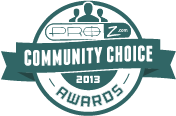Translation Times: What inspired you to write this book?
Nataly Kelly: Translation and interpreting are the inspiration for this
book. The fact is, these fields enable the entire world to communicate. That’s
why we actually dedicate the book to translators and interpreters. Too
many people are unaware of how expansive and diverse the translation field
really is. Even translators and interpreters are not always aware of the
many ways their work influences the world! This book aims to change that.
 |
| Nataly Kelly. |
TT: How did you come up with the title, Found in
Translation?
NK: Our editor gets all the credit for it! We didn’t think
of that title ourselves. One thing we learned in this process is that our view
of a good title has nothing in common with what mainstream readers consider a
good title! Because we are so used to seeing titles in the news like
“Lost in Translation” and “Found in Translation,” at first we had reservations
about it. However, I’ve heard from so many people who aren’t in the
translation field that they think the title is very clever. Since the
readers we’re hoping to reach are people who normally don’t read “translation
books,” that’s a good sign.
TT: You’re writing the book with a major publisher,
Penguin. How did that happen?
NK: Well, I basically wrote to the editor and pitched her the
book idea. She liked it and asked to see a proposal and sample chapter.
The book originally began several years before as a slightly different concept,
with a book idea I developed called From
Our Lips to Your Ears: How Interpreters Are Changing the World. I had not
had any luck finding a publisher, but later expanded the concept to include
translation too. My editor, Marian Lizzi at Perigee Books (a division of
Penguin) was smart enough to jump on a good idea when she saw one! It was
a joy to work with her and her team. She was so enthusiastic about the
concept and the book throughout the entire process.
TT:How did you end up working with our mutual friend and
translation technology guru Jost Zetzsche?
 |
| Jost Zetzsche. |
NK: Even though we knew each other by our reputations, Jost and
I had never even spoken before, until one day, he called me to ask me a
question for his newsletter, the Translator’s Tool Box. We had a great
call. Then, in a later conversation, he said, “We should write a book
together!” It seemed like a crazy idea in some ways. However, since
I had a book concept that I’d been wanting to write for several years, and I
had already been thinking of writing it with another person, I said, “I
actually have an idea for a book we could write together. Let me get back to
you.” After discussing it with some of my colleagues, I called him back
and told him about the concept. He was very enthusiastic about it, and agreed
to be involved. I am grateful for the timing of his suggestion to work on
a book, because timing is everything! And in this case, the timing was
perfect.
TT: What did you like most about working with him?
NK: Jost is extremely spontaneous. I’ll never forget when we
went to interview Peter Less, an interpreter who worked at the Nuremberg
Trials. As a young man, Peter’s entire family was murdered at Auschwitz,
yet he had to interpret for many of the masterminds of the Holocaust. While we
were asking him questions, Peter’s daughter Nettie was politely bringing us
coffee and Stollen, which we had bought for Peter in the Christmas market in
Chicago. As we were asking Peter about how hard things must have been after he
moved to the United States, Jost suddenly turned to Nettie and said, “What
about you? What was this experience like for you growing up?” I
nearly spilled my coffee! I was so focused on Peter, whom I respect so much,
that I had tuned out everyone else. Nettie’s perspective gave us a more
complete picture, and that is thanks to Jost.
TT: That's such a Jost thing to say! Brilliant outcome!
 |
| The finished product. |
TT: How long did it take
to write the book?
NK: From the time we signed our contract with Penguin and the
deadline for our manuscript, we had just a little over six months to write the
book. However, several of the stories
that appear in the book had already been written before that, because they were
part of the sample chapter I had written for From Our Lips to Your Ears, an early concept for the book, which
intended to show how interpreters are shaping our world. In fact, the very first story that appears in
the book, which shares my experience interpreting for a 9-1-1 call, was written
back in 2007. There is a story about an interpreter for NASA, and she had
agreed five years ago for her story to be told in the book. Once we had the
contract with Penguin, she was one of the first people I contacted, to ask if
we could include her story. Of course, the vast majority of the stories had to
be written from scratch. There are about 90 stories in total in the book.
TT: Can you describe the
writing process?
NK: It won’t sound very glamorous, but in my experience, writing
a book requires project management skills.
The first thing I did was to create a timeline and milestones for how
many words needed to be written by what dates, and I added in time for weaving
the chapters together and editing. I
created a spreadsheet to track all the stories and word counts, so that at any
given time, we could easily see how many words we had written, how many stories
we needed, and how much more was needed.
Jost and I discussed how many stories we could each commit to writing.
We needed to write about four stories per week over a 22-week period in order
to make our deadline. Whenever we would draft a story, we would send to the
other person for review and feedback.
TT: How did you decide
which stories to write?
 |
| Judy reading the manuscript by the pool. |
NK: For most of the stories, we needed to actually talk to
people. What’s it like to translate Harlequin romance novels? How does a translator end up completely
specialized in wine-related translation? What really goes on when you interpret
for the UN General Assembly? We ended up doing a large number of interviews in
order to answer these questions. Generally, we would start by picking a subject
area and then searching for people who might have interesting stories to tell
about translation in those particular areas. We decided to include some stories
that were based on our own experiences with translation and interpreting.
However, we didn’t want to just tell our own stories. We wanted the book to be
reflective of a much broader cross-section of the industry.
TT: How did you ensure
that the stories would strike a similar chord?
NK: Well, we knew that the style had to be consistently
accessible and jargon-free. But beyond
that, we wanted each story to make an impression on the reader. The point of
the book is that translation affects people’s lives. We did not want to be
preachy, so rather than overtly say this, we tried to illustrate this to the
reader in each and every story. We also
wanted to capture all kinds of different emotions in the stories in order to
make the reader feel a personal connection to translation. So, the first story
in the book is a bit of a nail-biter, but there are others designed to make you
laugh, feel compassion, or perhaps even a bit of outrage in some cases. David
Crystal, who wrote the foreword for our book, described it best, I think. He mentioned that, by the end of this book,
the reader discovers that what we find in translation is ourselves. That is precisely the point of the book. Translation is
not some distant activity that is far-removed from everyday life. It affects everything we do – even the air we
breathe! Just ask the translators who work
on projects for the Environmental Protection Agency. Their website is available
in six languages!
TT: How did you decide on
the story groupings and chapters?
NK: This was relatively easy.
Just open up any newspaper, and most of the sections are reflected in
our book: Politics, Sports,
Entertainment, Business, Technology, Religion, and so on. We didn’t use the newspaper to come up with
those categories, but we started out thinking that the book had to cover the
areas of life itself that people actually care to read about. Earlier on, we had more than double the
number of chapters. However, our editor
wisely suggested that we group the stories differently. The way we ended up presenting the stories
has a logic behind it. We start out with
topics that are truly life-affecting, like rescuing victims of the earthquake
in Haiti, protecting human beings from outbreaks, and other things that truly
affect human lives. Later in the book, we move into lighter topics, like
entertainment, food, and love. But we don’t shy away from tough topics either,
like conflict, politics, and religion.
TT: What did you think when you first held a copy of the book
in your hands?
NK: My first thought was, “I cannot wait for translators and
interpreters everywhere to see this!” It is, after all, a celebration of the
profession as a whole. However, I really cannot wait for everyone else
to see this book too, so that translators and interpreters, and the field at
large, will finally get some well-deserved attention. My mission was not just
to write a book, but to create awareness, so I cannot wait to see what happens
next.
























17 comments:
Luna is the dog, and Jerombot is the alter ego.
Luna is the dog, Jerombot is the alter ego
Ooh, pick me! Sarah@greyediting.com. Used to be a translation pm and saw this post on Jost's Twitter. Congrats on the launch!
Thanks for the great interview, Judy! (and as far the "copycat" charge goes: my hands were tied by circumstance and pressure from my 12-year-old!)
Jost
2) Universidad Andina Simón Bolívar Ecuador
5) Jeromobot
2) Universidad Andina Simón Bolívar Ecuador
5) Jeromobot
Thanks for this interview! It was interesting to hear a little more about how this book came together, and I am excited to read it.
And just in case:
2. Wartburg College
3. Luna
@Emily: You go, girl! Well done. You win our price. Those are the right answers. Excellent! We will be in touch via e-mail. :)
@Sarah: Sorry, Emily already answered correctly. :) Plus, you did not answer any of the trivia questions! You do have to answer questions to win the prize. We make it hard here on Translation Times.
@Jost: Our pleasure! Hehe, yes, those 12-year-old are very persuasive, aren't they?
@FrenchNad: Those are the correct answers, but unfortunately, Emily had already answered correctly and she was the first one, so she's already won the prize.
@FrenchNad: Duh, actually, as we hinted at, we were looking for Nataly's American alma mater.
@Nadia: One of these is correct, but Emily had already won the prize. Thanks for playing!
@Rachel M: Our pleasure. Glad you like it! You got both answers correct, but unfortunately Emily had already won the prize. Thanks so much for playing! We will have more raffles in the future for sure. We love raffles.
Hello buddies,
I am also a blogger, and I have recently started my first blog on translation. I was just searching through blogger.com trying to find out my translator colleagues, and I found your blog. I feel lucky to find out this great blog which is full of information and innovation. I have subscribed to your blog and will definitely read your future posts to benefit from them.
It would be great if you could visit my blog and share your valuable opinion about it. My blog does not have much to offer in terms of knowledge, but it is my humble attempt to contribute my my share.
Hope to see you there!
Best wishes,
Salman
http://translationstudiesinfo.blogspot.com/
Very Interesting book indeed, I must buy one also.
Post a Comment